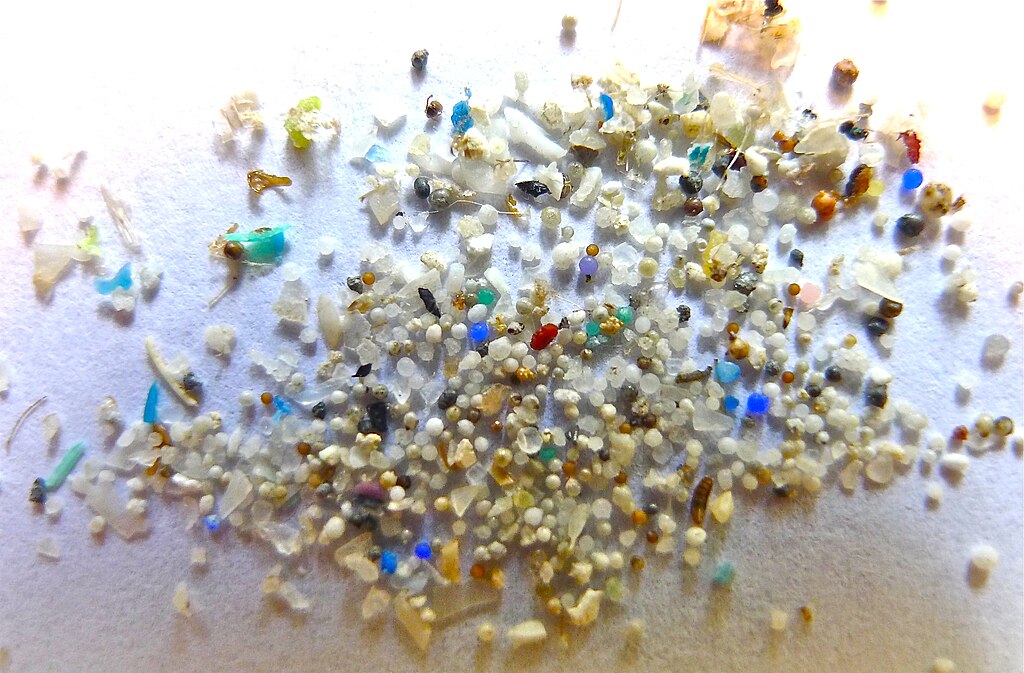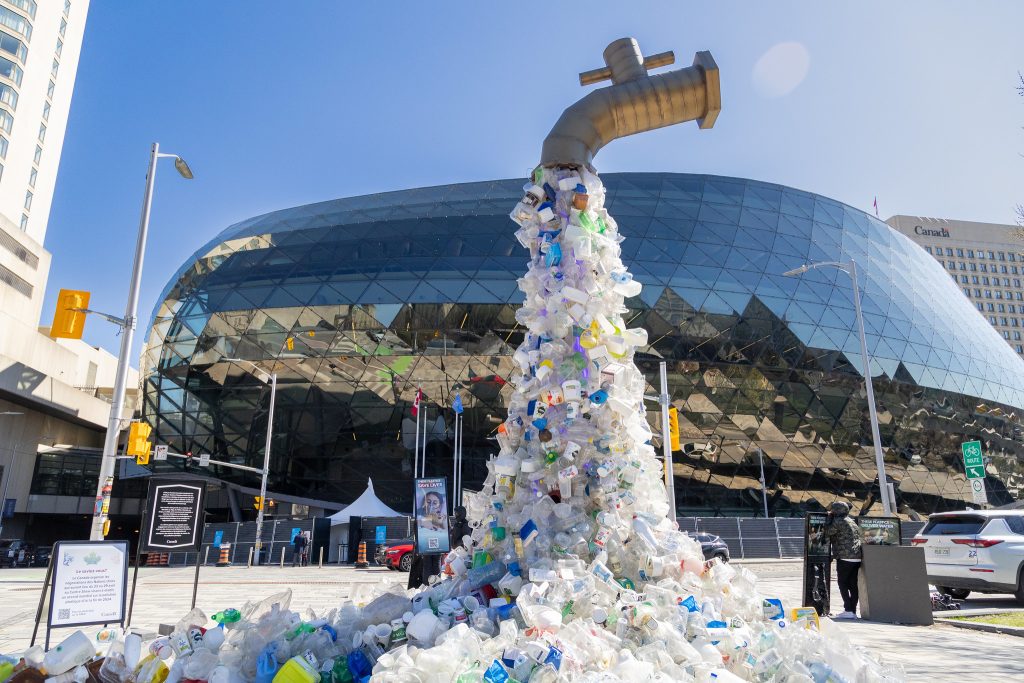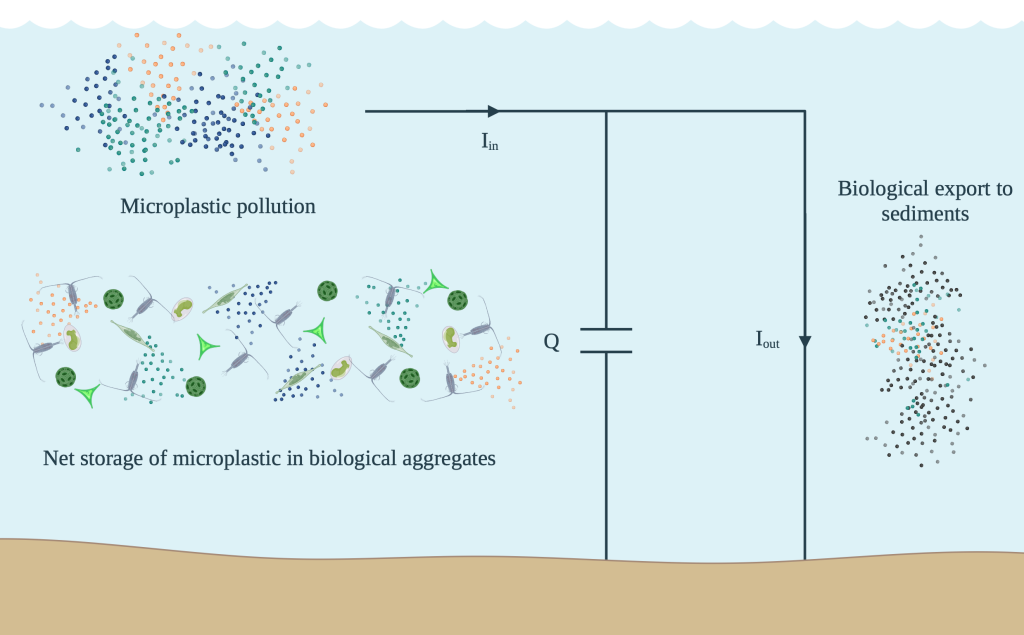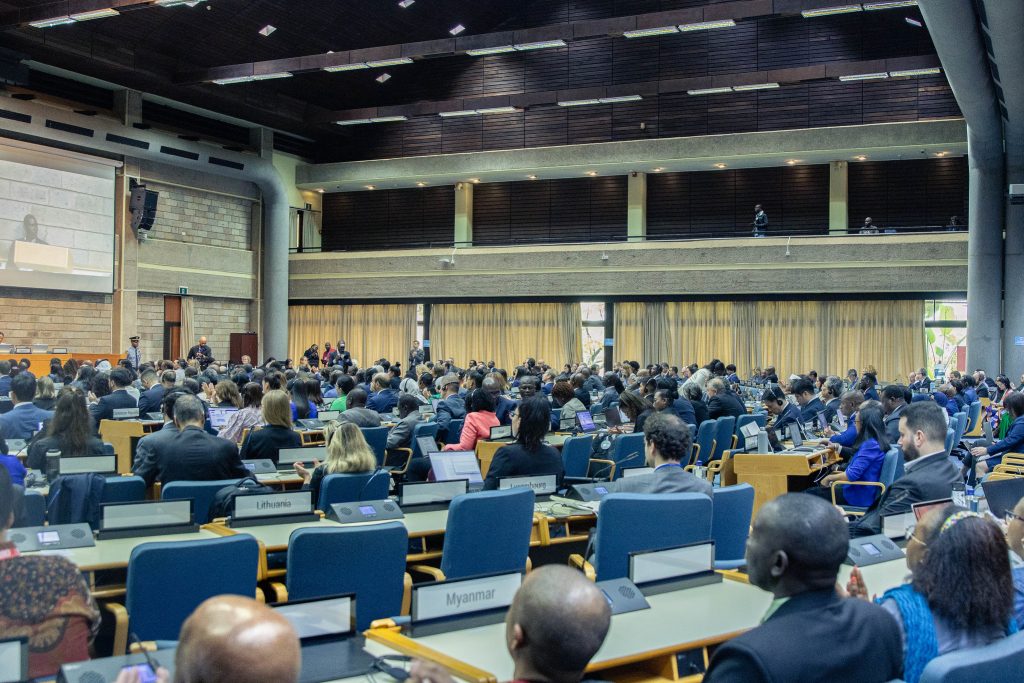PhD student Zhenna Azimrayat Andrews breaks down how marine life, alongside ambitious plastic pollution reduction goals, can help us eliminate microplastics from surface oceans.
This story begins in the 1950s, when plastics began to be produced commercially at a large scale. Each and every piece that was produced from that era onwards still exists in some capacity today. The convenience and wide range of applicability of plastic revolutionised consumption patterns for modern society, however, we are now facing the consequences of our resource-inefficient, linear plastic economy.

We are at the apex of a plastic pollution crisis. Once produced, plastic tends to stick around for centuries or even millennia. The irreversible nature of plastic production exacerbates it as a serial polluter due to its extreme turnover rate.
66% of plastics are made to be short-lived and therefore are replaced with more plastics. This contributes to a massive annual production of plastic waste, amounting to a whopping 353 million tons per year, which is only expected to increase to 1,014 million tons per year in the coming decades.
What is the issue with this?
After we use plastic, it often leaks as a waste product, and downstream of this lies the ocean, which is estimated to receive about 11 million tons of plastic per year. When this plastic is released into the marine environment, it can have detrimental impacts on almost all scales, from affecting marine biogeochemistry to acting as a stress multiplier in ecosystems which are already struggling under the pressures of climate change and biodiversity loss.
This marine pollution is a terrible kind of thank-you gift from the human race, a third of whom rely on the ocean for their livelihoods.
Responses to the plastic pollution crisis
Marine plastic pollution has not gone unnoticed, and the United Nations Environment Programme’s (UNEP) Intergovernmental Negotiating Committee (INC) is currently writing a treaty aiming to “end plastic pollution,” which is being published next year.
The contemporary issue of marine plastic pollution became the focus of my thesis term during my MSc in Environmental Technology at Imperial College London. For this, I was able to collaborate with Karin Kvale from GNS Science in New Zealand.
Kvale and I wanted to investigate the potential implications that resulted from the INC’s treaty. We looked specifically at how microplastics interacted with the base of the marine food web, and how these interactions changed depending on how we reduced plastic pollution in the future.
Many published papers had previously discussed the effects of plastics in the environment, and even how to feasibly stem the rate of pollution, but none had yet investigated how reducing the rate of pollution would affect the environment, and whether the aim of the INC to “end plastic pollution” was even possible to achieve.

Is ending microplastic pollution actually possible?
To study the effects of any policy outcomes that reduced the rate of plastic pollution, we applied eight idealised scenarios of microplastic pollution reduction to an Earth system climate model. This allowed us to simulate various potential policy outcomes which could reduce the flow of microplastics into the ocean.
These scenarios ranged from the impossibly idealised 100% removal scenario – where we stop plastic pollution completely all at once – which we used as a boundary study, to incremental reductions in annual pollution rates such as: 1%, 5%, 10%, etc.
We observed how microplastics interacted with marine microbiology in several states, including it being unattached from any biology, to becoming incorporated into biota through its bio-availability.
This is a polite way of saying that zooplankton tend to mistake microplastic for food and then end up pooping it out. Once microplastics are incorporated into marine biology, they enter the biological plastic sink. This allows microplastic to be removed from the surface of the ocean and be transported into deep waters, through the resulting change in its bouyancy or via the food chain.
Scientists still need to better understand the effects of microplastic polluting below the euphotic zone – the top layer of the ocean – but for ease of this study, we applied the assumption that what goes down very rarely comes back up.
Our results observed that through this process, when the rates of pollution input were reduced, marine biology began to act as a type of plastic capacitor, removing microplastic from surface oceans through the biological plastic sink (once the flow had been reduced to a sensible rate through our reduction scenarios).

We found that reducing the pollution rate by only 5% per year could remove all floating microplastics from the surface oceans within decades, potentially aligning with the INC’s aim.
This was an incredible result because we found that it might actually be feasible to remove floating microplastics from the oceans!
It’s never all sunshine and rainbows
The plastic has been taken in by marine life for this microplastic removal to occur but that has the nasty potential to harm anything that ingests it. This can have consequences ranging from physiological issues such as an increased risk of cancer and problems with fertility, to physical harm through internal obstruction if ingested in large enough quantities.
In our study, there was no rate of pollution reduction which resulted in microplastics ceasing to exist in marine life. We are indeed stuck with it now.
Despite this depressing but believable outcome, it’s important to remember that just because something seems irreversibly bad does not mean that we cannot influence the scale of how irreversibly bad it is. As we observed that marine biology acts like a microplastic capacitor – a battery that’s ‘charged’ as more and more microplastics become ingested and circulated through the food chain. This battery would slowly discharge over time and release stored microplastics back into the ocean.
We found it is possible that reducing the availability of microplastics can reduce this discharge in the long-run. Reducing our rates of pollution and attempting to mitigate existing plastics in the environment could help the state of contamination for future generations, and it’s worth a go.
What now?

All eyes are now on the INC treaty outcomes, at least if you are a member of the plastics community like I am. The treaty in itself is extremely ambitious, and I am only looking forward to seeing how the UNEP goes about trying to achieve its goal.
For now, I offer the results of our paper and I hope that it lends itself usefully to both the current INC discussions and the wider literature. I acknowledge and wholeheartedly believe that it should not be on the shoulders of the civilian to worry about the future state of global marine contamination, and I sincerely hope that the UNEP considered top-down system change as the most prominent solution to this global issue.
Until this treaty is enacted, I can only plead with readers to please remember your reusable cup and try to avoid single-use plastics when you can, the zooplankton will thank you for their avoided stomach-aches.